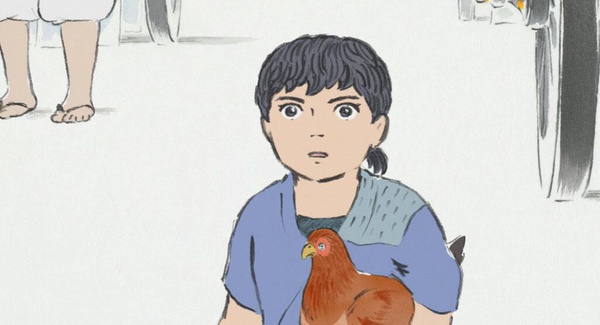THE TALE OF PRINCESS KAGUYA
GKIDS
Reviewed for Shockya by Harvey Karten. Data-based on Rotten Tomatoes.
Grade: B+
Director: Isao Takahata
Screenwriter: Isao Takahata
Cast: Dubbed version: Chloë Grace Moretz, James Caan, Mary Steenburgen, Darren Criss, Lucy Liu, Beau Bridges, James Marsden, Oliver Platt, Dean Cain. Subtitled version: Aki Asakura, Kengo Kora, Takeo Chii, Nobuko Miyamoto, Atsuko Takahata, Tomoko Tabata, Tatekawa, Takaya Kamikawa, Hikaru Ijuin, Ryudo Uzaki, Nakamura Shichinosuke II, Isao Hashizume, Yukiji Asaoka, Tatsuya Nakadai
Screened at: Review 2, NYC, 10/14/15
Opens: October 17, 2014
If your high school World History course was like mine, you spent a little time on Greece and Rome, another few weeks on medieval feudalism and the Renaissance in Europe, and tons of hours on Europe since the Industrial Revolution. If your course mentioned Japan at all, it was based on Western imperialism, beginning with Matthew Perry’s “opening” of that country in 1853. (Same goes for China, wherein their history seemed to begin with that country’s fight with Britain in the Opium Wars, African history “began” with 19th Century European imperialism and Latin American history “began” with 16th century conquests by Spain and Portugal. Then again, America must have been created by a new Big Bang in 1492.)
If Japan’s recorded history actually took root at about the time that August Caesar was presiding in Rome, then that country’s legends—unlike Greek Mythology—was and is a mystery to American students. The earliest recorded Japanese legend was set to print in the Tenth Century, that of a woman who was sent from the moon to the Earth, appearing to an elderly couple in the sticks rather than in the capital. Now, those of us with cinematic ambitions broader than those of moviegoers content with the latest goings-on of Tom and Jerry, Donald, Elmer and Mickey, have a chance to take in a technically incredible animated feature, eight years in the making, about this beautiful young woman, brought to life courtesy of Isao Takahata’s restrained and loving brush-stroke creation. “The Tale of Princess Kaguya,” an interpretation of the legend of “Taketori monogatari,” is not only a tale told through pictures and seen from the title character’s point of view but serves as an allegory, particularly a condemnation of materialism, narcissism, and artifice. Kaguya herself runs the gamut of human emotions from ecstasy to boredom to suicidal depression, and given its 137 minutes of running time seems to leave no details out.
The story opens on Okina (“old fella”) who makes his meager living as a bamboo cutter, and his wife Ona (“woman), when Okina is startled by observing a bamboo stalk that grow to full height in seconds, holding enclosed within the tiny, doll-like figure of a baby who they will later learn came to them from the moon. Though advanced in age, Ona begins nursing her, the couple noting that the figure, whom he calls princess but who is later named Kayuga, is growing leaps and bounds by the day.
Kayuga is teased by the local riff-raff but, though one of them, a handsome hunter named Sutemaru, will become her love interest. When Okina discovers gold dust and silks, her princess’ heavenly dowry, he takes his family to the court in the capital of Kyoto, settling into a mansion and getting the princess tutored by a governess—whose rigidity about the uptight rules of the court form the leading comedic scenes of the legend.
Kayuga is courted by five nobles, none of whom appealing to her. She offers her hand in marriage to anyone who could complete some Herculean tasks, considered impossible. The nobles for the most part bring back fakes, all symbolic of the fake royal life that the princess is living.
If you want to know how Kayuga fares after changing from crying infant to rebellious teen to a court favorite who wants only to return to the woods, you’ll of course see the movie. The film is not without flaws, the principal ones being its excessive length (the story can adequately be covered, methinks, in 100 minutes) and the overlong takes of several scenes. You may be able to choose either the Japanese version with English subtitles (the more recommended choice) or the version dubbed in English principally by American actors (see above list). The PG rating is, of course, kid-friendly, as is the distributing studio.
Rated PG. 137 minutes. © Harvey Karten, Member, New York Film Critics Online
Story – B
Acting – B
Technical – A
Overall – B+

